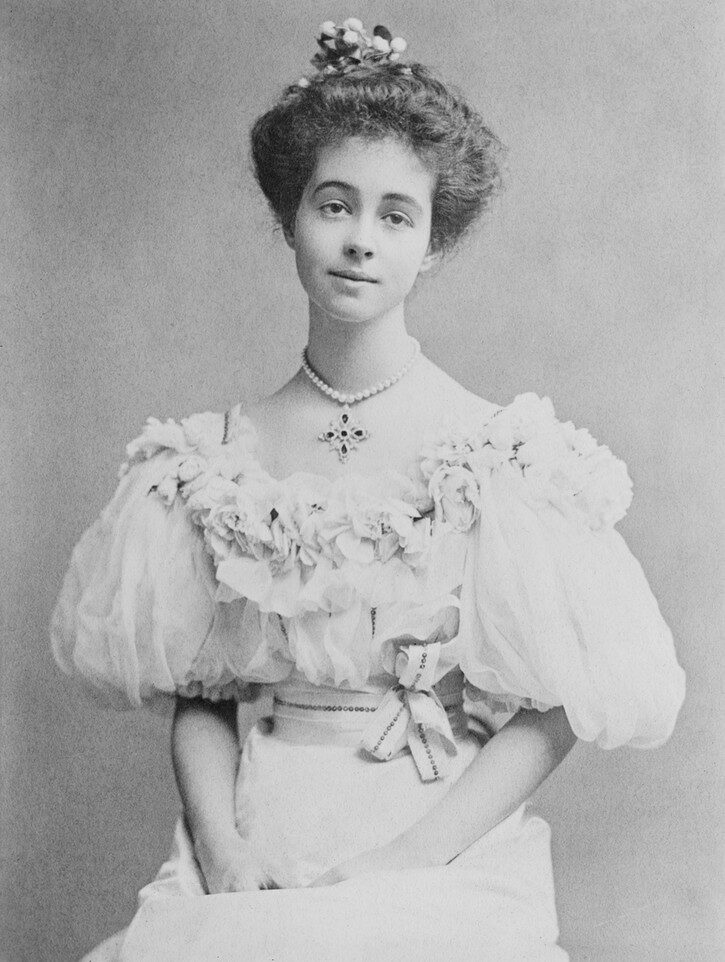Inside A Golden Cage-Consuelo Vanderbilt’s Honest Memoir And How She Changed Women’s Identity
Consuelo Vanderbilt's memoir unveils Edwardian aristocracy, exploring duty, authenticity and identity within a world of tradition and borrowed grandeur

At nineteen, Consuelo Vanderbilt had everything a young woman at the dawn of the twentieth century might dream of: breathtaking beauty, a vast family fortune and a passionate romance with an American young man. Yet within months, she found herself standing in Westminster Abbey, exchanging vows with a man she barely knew, Charles Spencer-Churchill, 9th Duke of Marlborough, while her heart remained an ocean away. The year was 1895, and Consuelo was about to become mistress of Blenheim Palace, one of England’s most magnificent homes, in a marriage orchestrated not by love but by her ambitious mother’s status strategy.
More than half a century later, when Consuelo published her memoir ‘The Glitter and the Gold’ in 1953, readers discovered something unexpected in her recollections of gilded life. Rather than the expected haughty reminiscences of a privileged aristocrat, they found a woman whose observations were refreshingly candid and often genuinely amusing. As an ‘unsnobbish, but often amused observer’ of the intricate hierarchy both upstairs and downstairs at Blenheim Palace, Consuelo possessed the rare gift of making even the most rarefied existence feel accessible to ordinary readers.
Her perspective carried a unique duality – she was simultaneously an insider privy to aristocratic secrets and an outsider whose American sensibilities allowed her to view English customs with fresh eyes. This combination lent her storytelling both intimacy and critical distance, making her memoir feel less like aristocratic name-dropping and more like confessions shared between friends over tea.
Inside the Golden Cage
Consuelo’s memoir offers a rare window into Edwardian high society at its most glittering. Her pages shimmer with descriptions of grand balls where hundreds of guests danced beneath crystal chandeliers, weekend house parties that stretched across entire seasons and state occasions where protocol dictated every gesture and glance. Through her eyes, readers witness encounters with the era’s most compelling figures: a formidable Queen Victoria in her final years, the pleasure-loving King Edward VII and his elegant Queen Alexandra, the imposing Tsar Nicholas, the sophisticated Prince Metternich and a young Winston Churchill already displaying hints of his future greatness.
Yet beneath the spectacular surface, Consuelo revealed the suffocating nature of aristocratic expectations. As one of the ‘dollar princesses’ – wealthy American heiresses who married into financially struggling British nobility – she understood that her role was fundamentally transactional. Her substantial dowry had quite literally saved Blenheim Palace from financial ruin, making her both its salvation and, in some ways, its prisoner.
The memoir’s most poignant passages explore the tension between Consuelo’s profound sense of duty and her deep personal longings. Having been forced to abandon her American love, she struggled to find meaning within the rigid confines of her new existence. Her marriage to the Duke was loveless from the start – a business arrangement disguised as a romantic union – yet she was expected to maintain the facade of contentment while fulfilling her obligations as a duchess.
Consuelo’s journey from compliance to self-assertion unfolds gradually throughout her narrative. Initially overwhelmed by the weight of tradition and expectation, she slowly developed the confidence to assert her own voice and values. Her charitable work became an outlet for genuine purpose, allowing her to connect with causes beyond the insular world of aristocratic entertainment.
A Universal Story in Gilded Setting
What makes Consuelo’s memoir enduringly compelling is not its catalogue of famous names or lavish events, but its fundamentally human story. Despite the extraordinary circumstances of her life, her struggles feel remarkably contemporary. The pressure to marry for family advancement rather than personal happiness, the challenge of maintaining one’s identity within suffocating social expectations, the quest to find authentic purpose amid superficial obligations – these themes transcend both era and social class.
Between 1870 and 1914, more than 100 American women married into British nobility, but few left such an honest account of the experience. Consuelo’s willingness to acknowledge both the privileges and the profound loneliness of her position makes her story uniquely valuable as historical testimony.
Her memoir also captures a pivotal moment in British social history. The Edwardian era represented the last flowering of traditional aristocratic culture before the First World War changed everything forever. Through Consuelo’s eyes, we see this world in its final glory – magnificent but already showing signs of the social changes that would soon make such elaborate hierarchies seem antiquated.
How Consuelo Vanderbilt Changed Women’s Identity
In the shadow of towering mansions and suffocating corsets, Consuelo Vanderbilt’s life seemed gilded beyond imagination. But behind the diamond tiaras and grand titles lay a young woman stripped of choice, wed not for love but for legacy—a living symbol of transactional ambition during the Gilded Age.
As The Gilded Age series enters its third season, with the latest episodes are now released every Sunday, audiences continue to be captivated by the polished facades and ruthless alliances that defined that era. But within the drama, there’s a deeper thread that mirrors the quiet evolution of women like Consuelo. Watching the show, we witness the performance of perfection, the strategic marriages and the silencing of desire. And yet, the greatest lesson isn’t in the grandeur but in the social progress what breaks through it.
Consuelo Vanderbilt’s story reminds us that glitter is not gold. In her memoir The Glitter and the Gold, she pulled back the heavy velvet curtain on her life as the Duchess of Marlborough. Her voice clear, restrained and devastatingly honest cut through the illusions. She was the girl sold into royalty by her mother’s iron will, the wife admired but unloved, and finally, the woman who walked away from it all and course corrected her destiny.
What makes Consuelo timeless is not her title, but her transformation. She evolved from ornamental to outspoken, from a symbol of submission to an agent of change. In rejecting a life chosen for her, she redefined what it meant to be a woman, in any era. She showed that self-awareness could be just as powerful as social conditioning.
Consuelo changed women’s identity by refusing to be fossilized by history. She gave voice to the internal prisons many women of her time, and still today, navigate behind smiles and silk. She reminded us that dignity can coexist with heartbreak, and that self-worth is never defined by status.
What do we learn from her? That status means nothing without self-actualisation. That love, when absent of freedom, becomes a cage. And that a women, who dares to reclaim her narrative, can shape history not by playing the game, but by choosing to align with her life purpose.
In this age of retellings and revisions, Consuelo Vanderbilt remains more than a character in a historical drama. She is a mirror, a sign and a whisper of hope to every woman who has ever been told to be silent and settle for less than her worth. Her story teaches us that even in the most golden of cages, every woman has a choice to use her voice or go silent.
Today’s readers may find themselves surprisingly moved by Consuelo’s reflections on public duty versus private desire. In an age when social media creates new forms of performance and expectation, her struggles with maintaining appearances while nurturing authentic relationships feel remarkably current. Her eventual ability to claim agency over her own life – she later divorced and remarried for love – offers hope to anyone feeling trapped by circumstances or expectations.
What Has Really Changed in 2025?
On the surface, the Gilded Age and 2025 couldn’t be more different. One was dominated by aristocrats and industrial tycoons; 2025 by influencers and tech billionaires. But the core remains the same: image is power, and women are still expected to play roles crafted for them, not by them.
In Consuelo Vanderbilt’s time, beauty and obedience were currency. Young women were groomed to marry well, stay silent and uphold a family’s social standing. Today, the stage has shifted to screens, but the pressure remains. Influencers, especially women, are still rewarded for appearance, perfection and compliance, with the unspoken rule: be perfect, not yourself.
Social media has replaced ballrooms, but both demand performance. In the Gilded Age, a woman’s value was measured in lineage and grace. In 2025, it’s measured in likes and engagement. Behind both facades, the cost is often the same: exhaustion, disconnection, and a loss of identity.
Consuelo’s memoir, The Glitter and the Gold, broke that silence. She exposed the emotional toll of living a life that looked perfect from the outside but felt hollow within. In doing so, she gave voice to generations of women pressured to smile while shrinking themselves.
That is what makes her story resonate today. Everyone seems to be performing online, at work, even in relationships. After over a century of societal change, her refusal to keep pretending still feels revolutionary. She didn’t escape the system easily or dramatically. She walked away quietly, with clarity. And that’s the lesson.
Even now, many women are stepping away from curated lives and choosing something deeper: purpose, freedom, self-respect. The golden cages have changed shape, but they’re still there. And so are the women brave enough to leave them.
The duchess who once felt like a bystander in her own life ultimately became the author of her own story. Through ‘The Glitter and the Gold’, Consuelo Vanderbilt ensured that her voice would outlast the gilded age that both elevated and constrained her, leaving readers with the realisation that even within the most extraordinary circumstances, nothing can take away your right to be honest with yourself. Much like modern royals who face public scrutiny, Consuelo’s memoir reminds us that regardless of the role society expects you to play, you have a moral duty to live your life’s purpose. My personal take is that behind every woman there is a very human story of resilience and self- actualisation that is worth sharing.





